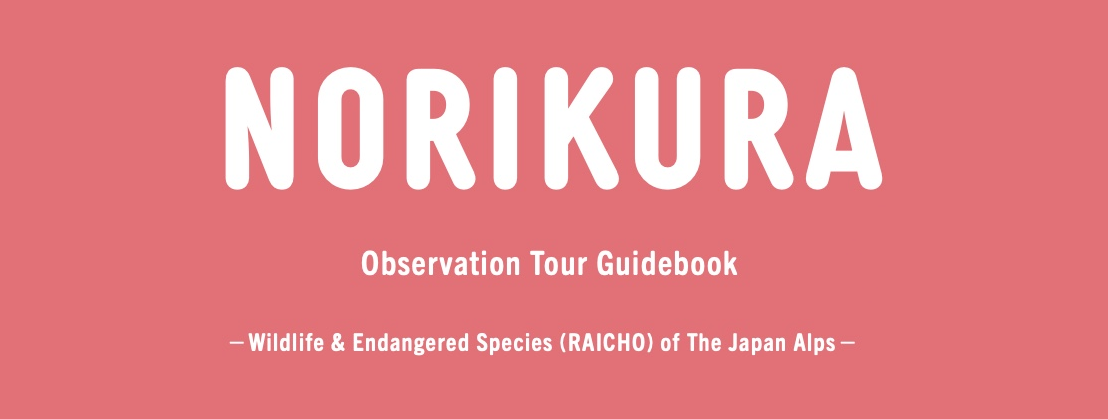【CONTENTS】Mountain of Worship, Bird of the Gods

Mountain worship in the foothills of Mt. Norikura
Since ancient times in Japan, there has been a belief that a god resides deep within the heart of a mountain and that mountains themselves are sacred resulting in the worship of mountains as places where the souls of one’s ancestors ascend. In the small villages in the foothills of the Hida mountains and along the Kohachiga river basin, the Norikura Mountains were worshipped as “Hidaki-son,” (god of the sun) and eventually the government took the lead in building shrines where they prayed to the gods of the mountains, sun, and water for peace in their lives, which were based on hunting, gathering, and agriculture. On the Shinshu (or Nagano) side, the god of water is enshrined at Azusamizu Shrine, which is also the center of worship of the Norikura Mountains, the most important water source for rice cultivation and where the rain-making festival is still held in the foothills of the mountains.
Norikura mountain monks – Shugenja
Shugendo is a combination of mountain worship and Buddhism. In ancient times, the Norikura Mountains were referred to as Awa-yama, Kurai-yama, and Kura-gane, and like Kaga-Hakusan and Tateyama, mountain paths were forged by priests and monks seeking enlightenment and salvation for themselves and others through austere training deep within the mountains. In the Edo period, the monks Enku and Mokujiki trained in caves on the Norikura Mountains. In the Meiji period, shugenja from Mino (Gifu) such as Muzuku Shuzen, Kamimaki Taronosuke and Itando Shotaro, along with local volunteers, pioneered numerous mountain trails. On the Shinshu side, the monks Myokaku and Eishou opened up the trails to Sanbon Falls, Reisen-goya mountain hut, and the ceremonial site near Kurai-gahara.
Places of worship
Norikura Hongu (Okumiya/Norikura Daigongen) is enshrined at the Kengamine summit, Dainichi Nyorai is enshrined on Mt. Dainichi, and Yakushi Nyorai is enshrined on Mt. Yakushi, where we can see the syncretism of Shinto and Buddhism. On the Shinshu side, Asahi Daigongen Photo 2: Seated statue of Ryomen Sukuna by Enku (Hida Senko-ji Temple collection) stands back-to-back with Hongu Shrine. Shrines were built in the Kamakura era, and it is said that eventually, with the prosperity of the O’bi molten iron mines in the foothills, people in the villages worshipped at them.
Ryomen Sukuna/ Senko-ji Temple and the Monk Enku
Hida Senko-ji Temple was founded 1600 years ago by Ryomen Sukuna, and 1200 years ago it was built as an Esoteric Buddhist temple of the Koyasan Shingon sect. According to the Nihon Shoki (Chronicles of Japan), he was a deformed demon who appeared in Hida during the reign of the Nintoku Emperor (approx. 1600 years ago) and was regarded as a rebel who refused to obey the Yamato Imperial rule, while according to local folklore, he was a heroic and benevolent god and leader of the people. In the early years of the Edo Period, the monk Enku, who practiced mountain worship and created Buddhist statues, carved 120,000 statues in his lifetime and gave them to villagers who were suffering hardships. Today, you can still see the numerous statues of Buddha he carved during his time at Senko-ji Temple.

Lessons of the Rock Ptarmigan
The miracle of the Japanese Rock Ptarmigan’s survival since the glacial age reflects both the skillful evolution achieved by the bird’s unique ecology and the Japanese cultural construction that made the Rock Ptarmigan, which nestles deep within the mountains where the gods reside, “the bird of the gods.” Even in this age of advanced science and a highly sophisticated information society, deep within our hearts, we Japanese still have a sense of reverence for the awe-inspiring mountains and a sense of nature that drives us to live in harmony with it. The mother and baby Rock Ptarmigan pecking at nearby gankoran (black crowberries) represent the significance of the unique Japanese spiritual atmosphere that has been passed down uninterrupted from generation to generation.

The Norikura Mountains at sunset (the figure lauded by the poet Yusaku Fukuda)





Sanbon Falls is said to have once been a ceremonial site for shugenja.